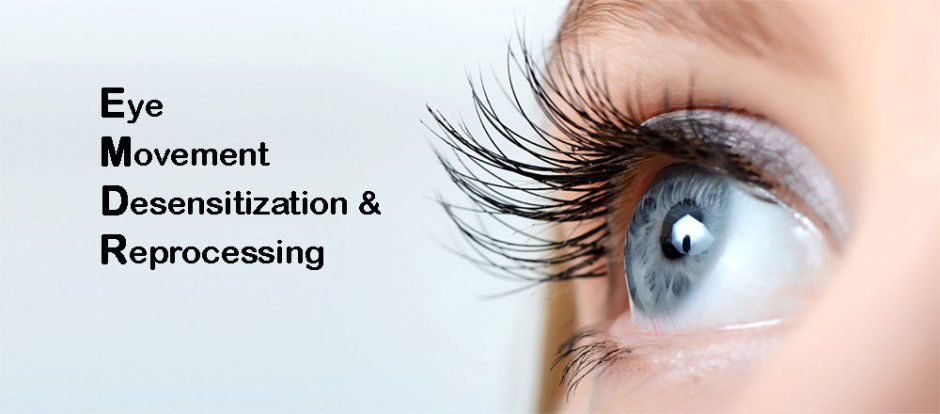EMDR Q&A with Therapist Pat Jakiel


I’m thrilled to welcome Pat Jakiel to Our Bipolar! Pat is a long-time accomplished therapist based in Washington, PA, who helped me tremendously this past fall by using EMDR (eye movement desensitization and reprocessing) as therapy. Just four sessions of EMDR was all I needed to deal with two traumatic memories from childhood—it was like magic! I knew I had to write a post about it since so many people can benefit from the ease and speediness of EMDR. Pat generously agreed to do a Q&A about EMDR. If you have anxiety or have experienced trauma, EMDR might be the perfect solution for you.
What is your background in terms of your education, training, years in private practice, other applicable work experience?
Pat: I have my master’s in Counseling from Duquesne. I worked as a drug and alcohol therapist for 35 years before retiring in 2013. I’ve been doing mental health counseling part-time in private practice for 20 years. Prior to this, I was a youth development counselor at Warrendale Youth Development Center, caseworker at Allegheny County Children and Youth, and “dorm mom” at La Roche College.
What kind of training have you received specifically for EMDR?
Pat: In terms of EMDR training, I completed a 51-hour intensive course on EMDR in the fall of 2008 and have been using EMDR as therapy ever since (about 12 years).
What caused you to pursue EMDR certification in the first place? What drew you to EMDR?
Pat: I took a training in “metaphor” training, which was a bit like EMDR in that it too removed talking and allowed the body to process, via metaphors, what symptoms were “stuck” inside. I was sold on the answer to traumas/stuck emotions being within the body’s ability to heal (quite) beyond the intellect. A session of this took about 3 hours and was exhausting. I was a believer in the body holding the secrets to emotional healing.
Please explain in general terms what happens in an EMDR session.
Pat: There are 3 phases in an EMDR session:
1. Identify a memory that has unpleasant feelings attached to it and get to know what the body is experiencing because of it (by rating the level of disturbance and identifying what I’m telling myself about myself because of it, identifying the picture of the part of the memory that is the most disturbing, locating where the disturbance is registering in the body).
2. Letting the body do whatever it needs to do (suspend all thought/analyzing/”making” something happen) and just observe what the body does/is experiencing while having a back and forth sensory experience. That sensory experience could be tapping, watching a light move from right to left, etc.
3. Internalizing the positive message about oneself, which occurs when the body is no longer symptomatic. This happens via the back and forth sensory experience (e.g., tapping) and the placing of the original disturbing picture side by side with the new realization about one’s self.
What happens:
When something feels bad, it is only human to move away from the pain in order to feel better. In doing so, a person usually stops the processing (feeling) of it. These unprocessed feelings, left inside, show up in responses whenever our unconscious feels threatened again. This can occur even when reality says that we are really safe. The negative self statements that have remained unchallenged go off and affect our thinking and choices.
EMDR invites the body to return to the center of the pain (instead of and opposite of “getting the hell out of Dodge”) and to feel the accompanying feelings and negative self belief most intensely. Then the bilateral stimulation starts (e.g., tapping back and forth on right then left shoulders or knees) and the client gets out-of-the-way of the body’s processing what hasn’t been processed. The sensations are finally allowed to be present, and as a result, released, as only the body is in control. Eventually, when no more disturbance is located in the body, the client will have the trauma (including feelings and self talk) behind them, in their history rather than carrying it around in the present and it will cease to impact the individual. The client will now see the memory as an objective by-stander would.
What does a successful outcome an EMDR look like? An unsuccessful outcome?
Pat: A successful outcome is that the person can look at the trauma and not experience the feelings nor the belief about the self that they had prior to the EMDR. An unsuccessful outcome, very few times, i.e. about 2-3%, a client hasn’t been able to let go of control intellectually in order to allow the “natural” to occur.
On average, how many sessions are needed to deal with a particular traumatic memory? How many sessions of talk therapy would you estimate would be needed to achieve the same outcome?
Pat: I bet that most EMDR work on a particular trauma that I have been involved with is finished in 3 or 4 sessions. My experience using talk therapy with trauma work is that it never comes close to the relief that EMDR brings. I liken it to EMDR’s ability to “pull out by the root,’ rather than “pulling off some of the leaves.”
Is EMDR only effective when dealing with past trauma, or can it be used for other purposes? Can EMDR also be used for anxiety or non-trauma-related uses?
Pat: EMDR can be used to lessen or to eliminate a future anxiety-ridden event. Basically a person relays the future event as it probably will go. The client is instructed to stop the telling of the day when feeling appear. We then do the bilateral stimulation (e.g., tapping) and the person pays attention to their body. We continue until there is no more bodily disturbance and then the client continues to relay the story until beyond all threat, doing the tapping/body awareness each time feelings arise. The same thing is repeated until the path is completely cleared and no more disturbance. Bilateral stimulation (e.g., tapping) as a person observes the body while suspending all thought can relieve body symptoms IF the symptom was from feelings. Full EMDR (phase 1) isn’t necessary for symptom relief.
Is it possible for someone to perform EMDR by themselves, without the aid of a therapist?
Pat: I don’t know if someone can do EMDR by themselves. None of my clients have mentioned having tried it.
Are there certain issues that are best dealt with in talk therapy instead of EMDR?
Pat: Yes, there are current issues that are best dealt with in talk therapy, e.g., putting words to dynamics, communication skills, coping skills, and understanding patterns.
Please give the analogy for EMDR you described to me about the body.
Pat: We take food into the body, and the body naturally processes it. What is of value to bodily systems goes where it needs to and the rest has to get excreted or we are constipated. Similarly, trauma feelings come into our body. All needs to be processed (felt) in order for the event to be “behind us” and in our history. If this doesn’t happen, the feelings get carried with us until the body is permitted to complete the processing. Having done this (using EMDR), “constipation” is relieved, and we release to our history and feel lighter and better able to think, feel, and be present.
Now for the bad news. Pat Jakiel is a wonderful therapist and all-around great person, but she is semi-retired and is not taking on new clients.
The good news! If you’d like to try EMDR therapy, the therapists listed below are taking clients in the South Hills of Pittsburgh. You can also go to your health insurance website and search for EMDR under the specialty category.
Kate Thompson
www.katethompsonlpc.com
724-255-7521
Washington, PA
Elizabeth Ventura
https://acw-online.com
724-413-2876
McMurray, PA
Let me know if you have EMDR questions for me or Pat in the Comments!
